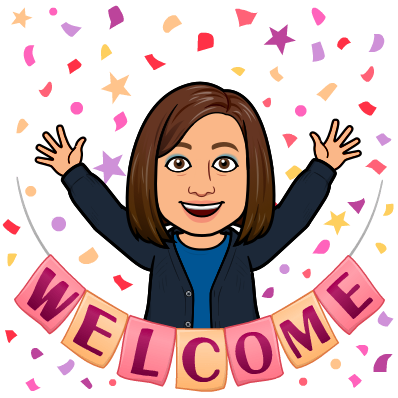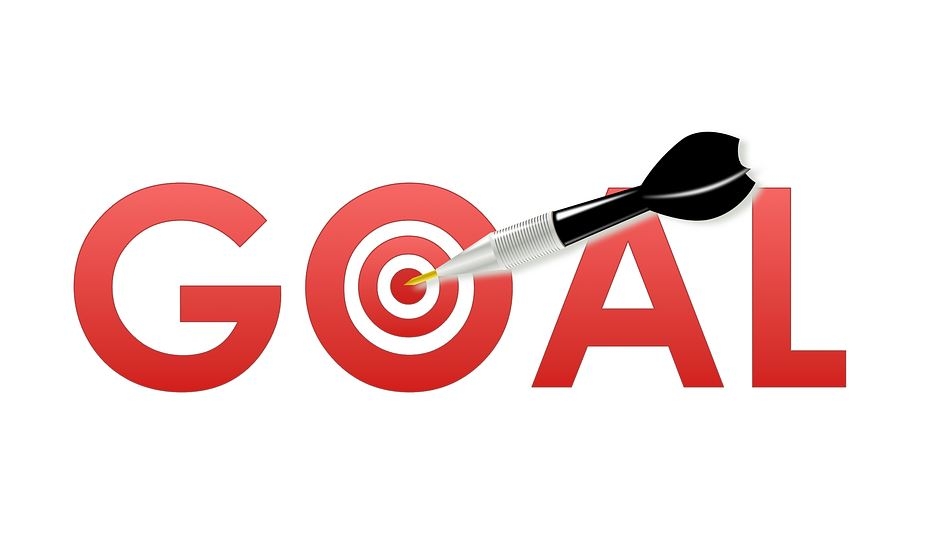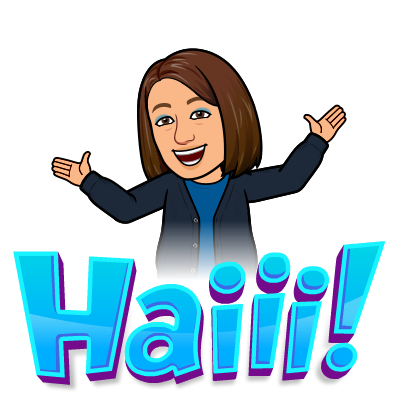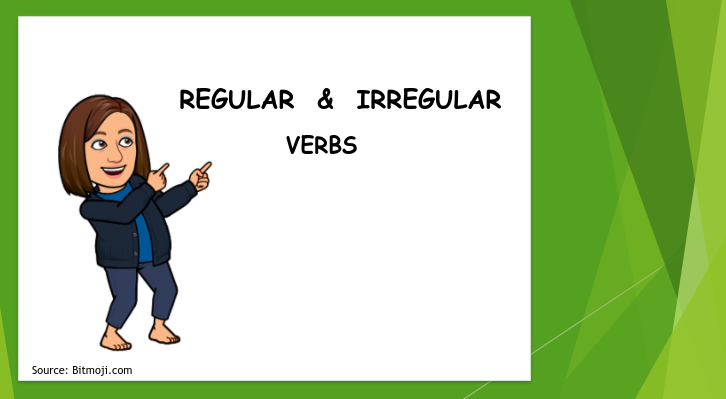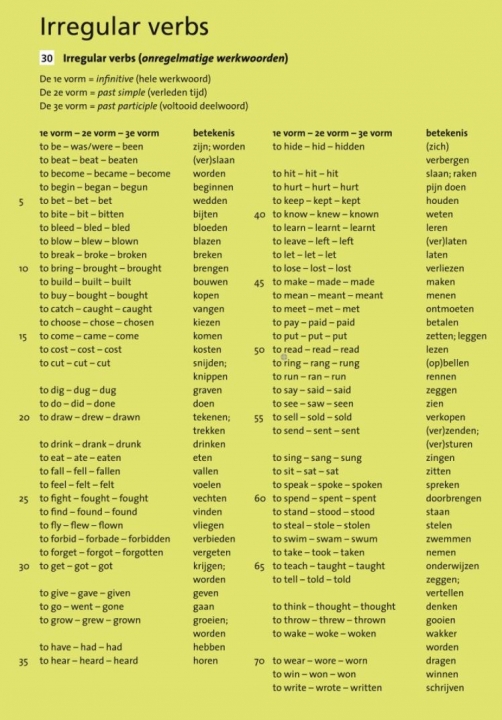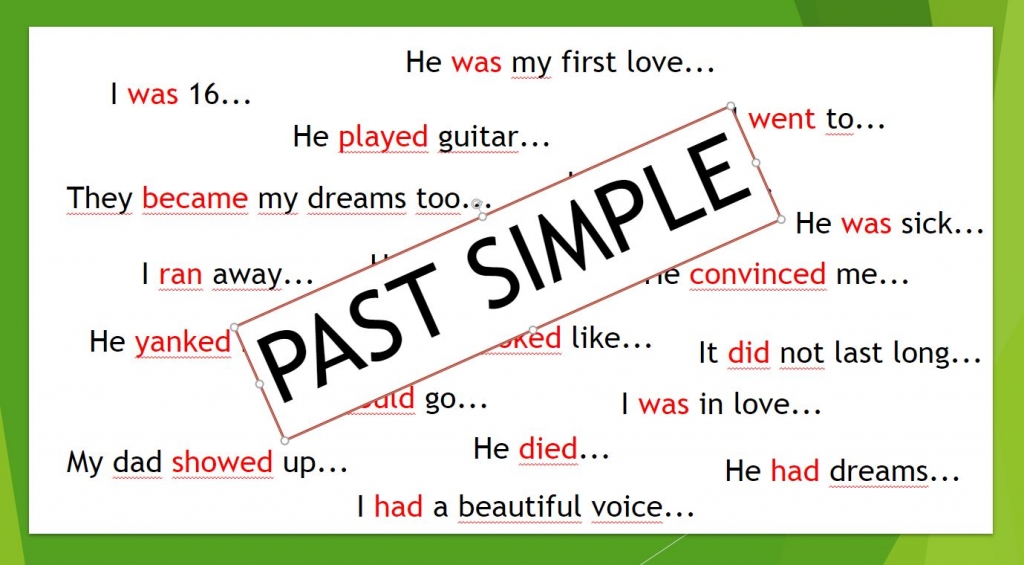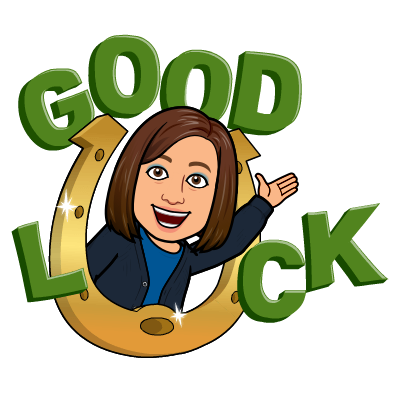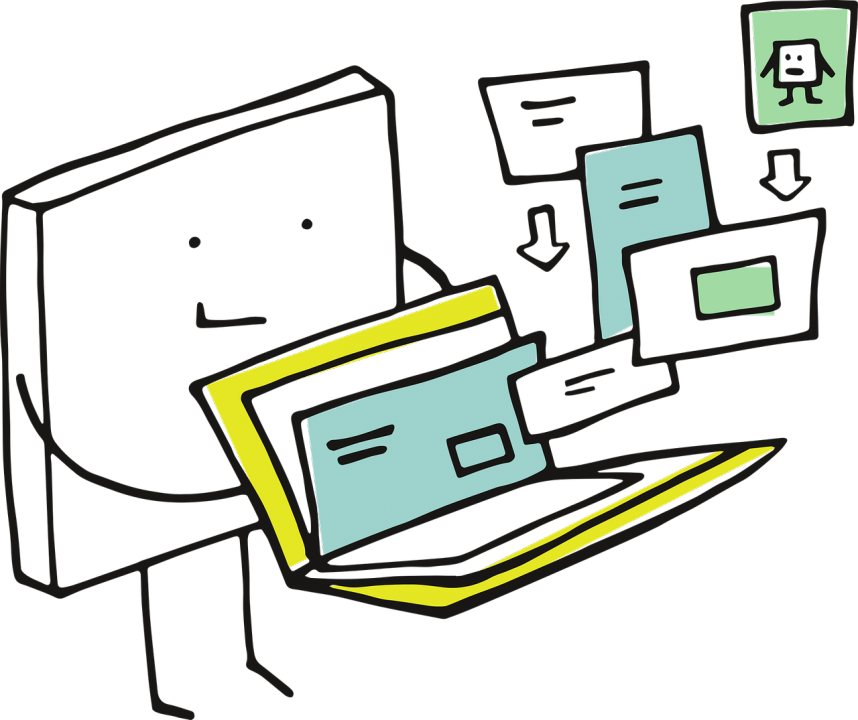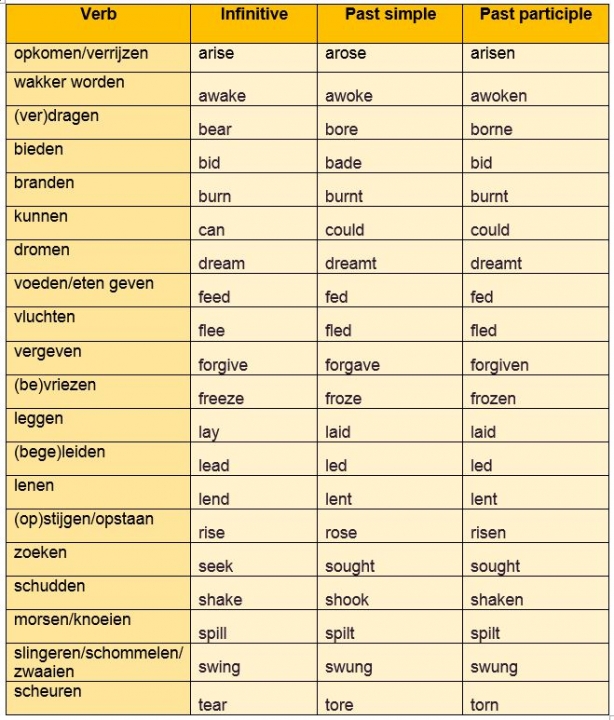Het arrangement Irregular verbs, Past Simple & Present Perfect is gemaakt met Wikiwijs van Kennisnet. Wikiwijs is hét onderwijsplatform waar je leermiddelen zoekt, maakt en deelt.
- Auteur
- Laatst gewijzigd
- 12-11-2020 12:25:33
- Licentie
-
Dit lesmateriaal is gepubliceerd onder de Creative Commons Naamsvermelding-GelijkDelen 4.0 Internationale licentie. Dit houdt in dat je onder de voorwaarde van naamsvermelding en publicatie onder dezelfde licentie vrij bent om:
- het werk te delen - te kopiëren, te verspreiden en door te geven via elk medium of bestandsformaat
- het werk te bewerken - te remixen, te veranderen en afgeleide werken te maken
- voor alle doeleinden, inclusief commerciële doeleinden.
Meer informatie over de CC Naamsvermelding-GelijkDelen 4.0 Internationale licentie.
Aanvullende informatie over dit lesmateriaal
Van dit lesmateriaal is de volgende aanvullende informatie beschikbaar:
- Toelichting
- At the end of this series of lessons you will know and be able to use all irregular verbs in combination with Past Simple and Present Perfect.
- Eindgebruiker
- leerling/student
- Moeilijkheidsgraad
- gemiddeld
- Studiebelasting
- 4 uur 0 minuten
- Trefwoorden
- irregular verbs, past simple, present perfect
Bronnen
| Bron | Type |
|---|---|
|
Irregular Verbs song https://youtu.be/MA3NFtLc22k |
Video |
|
Crossword Puzzle Regular and Irregular Verbs in Past Simple https://crosswordlabs.com/embed/regular-and-irregular-verbs-in-the-past-simple |
Link |
|
Crossword Puzzle Regular and Irregular Verbs in Present Perfect https://crosswordlabs.com/embed/2020-10-19-91 |
Link |
|
Quizlet Irregular verbs https://quizlet.com/_64tsr8?x=1jqt&i=1tmzjt |
Link |
|
https://docs.google.com/forms/d/e/1FAIpQLSdc3URNKC3KPyuQjhOxvXJ608ioOtkoPTEtkTTvJ3IWUFbvlA/viewform?usp=sf_link https://docs.google.com/forms/d/e/1FAIpQLSdc3URNKC3KPyuQjhOxvXJ608ioOtkoPTEtkTTvJ3IWUFbvlA/viewform?usp=sf_link |
Link |
|
Instruction video Irregular Verbs in Dutch https://youtu.be/81JVpmyJiWI |
Video |
|
Irregular verbs song https://youtu.be/MA3NFtLc22k |
Video |
|
Crossword Puzzle Regular and Irregular Verbs in Past Simple https://crosswordlabs.com/embed/regular-and-irregular-verbs-in-the-past-simple |
Link |
|
Crossword Puzzle Regular and Irregular Verbs in Present Perfect https://crosswordlabs.com/embed/2020-10-19-91 |
Link |
|
Quizlet Irregular Verbs https://quizlet.com/_64tsr8?x=1jqt&i=1tmzjt |
Link |
|
Extra online practice Irregular Verbs https://www.englisch-hilfen.de/en/exercises_list/verbs.htm |
Link |
|
Instruction video Past Simple in Dutch https://youtu.be/g_15Ij_omWc |
Video |
|
Extra online practice Past Simple https://www.english-4u.de/en/grammar/past-simple.htm |
Link |
|
Instruction video Present Perfect in Dutch https://youtu.be/WXCpj3UY5JA |
Video |
|
Extra online practice Present Perfect https://www.english-4u.de/en/grammar/present-perfect-simple.htm |
Link |
|
https://docs.google.com/forms/d/e/1FAIpQLSdc3URNKC3KPyuQjhOxvXJ608ioOtkoPTEtkTTvJ3IWUFbvlA/viewform?usp=sf_link https://docs.google.com/forms/d/e/1FAIpQLSdc3URNKC3KPyuQjhOxvXJ608ioOtkoPTEtkTTvJ3IWUFbvlA/viewform?usp=sf_link |
Link |
|
Introduction Irregular Verbs https://youtu.be/ZKr--3HpP_A |
Video |
|
VOCABULARY: How to use irregular verbs https://youtu.be/886JeoBoQ7g |
Video |
|
Crossword Puzzle Regular and Irregular Verbs in Past Simple https://crosswordlabs.com/embed/regular-and-irregular-verbs-in-the-past-simple-2 |
Link |
|
Crossword Puzzle Regular and Irregular Verbs in Present Perfect https://crosswordlabs.com/embed/regular-and-irregular-verbs-in-the-present-perfect-3 |
Link |
|
Quizlet Irregular verbs https://quizlet.com/_64tsr8?x=1jqt&i=1tmzjt |
Link |
|
Introduction Past Simple https://youtu.be/xLA58CSIf3M |
Video |
|
Introduction Present Perfect https://youtu.be/5vJOJrVIgek |
Video |
|
Video How to use the present perfect continuous tense https://youtu.be/70w98yeKj74 |
Video |
|
Video Present Perfect Continuous https://youtu.be/vuUDb4IUxzE |
Video |
|
https://docs.google.com/forms/d/e/1FAIpQLSdc3URNKC3KPyuQjhOxvXJ608ioOtkoPTEtkTTvJ3IWUFbvlA/viewform?usp=sf_link https://docs.google.com/forms/d/e/1FAIpQLSdc3URNKC3KPyuQjhOxvXJ608ioOtkoPTEtkTTvJ3IWUFbvlA/viewform?usp=sf_link |
Link |

